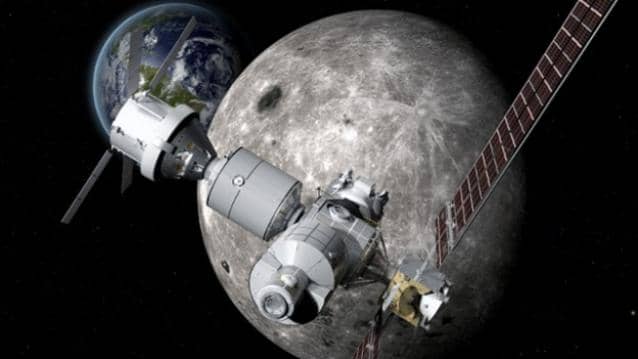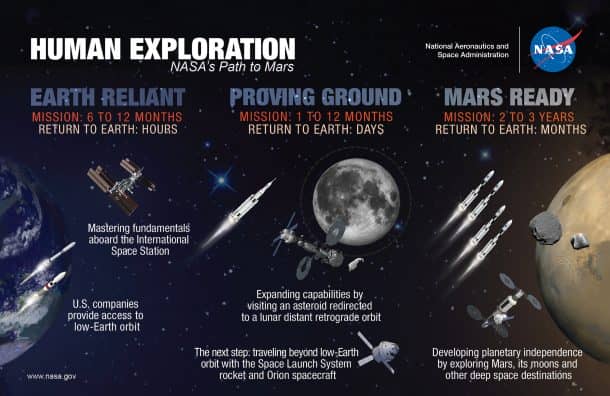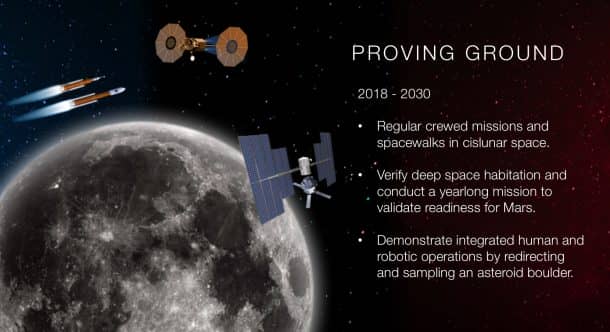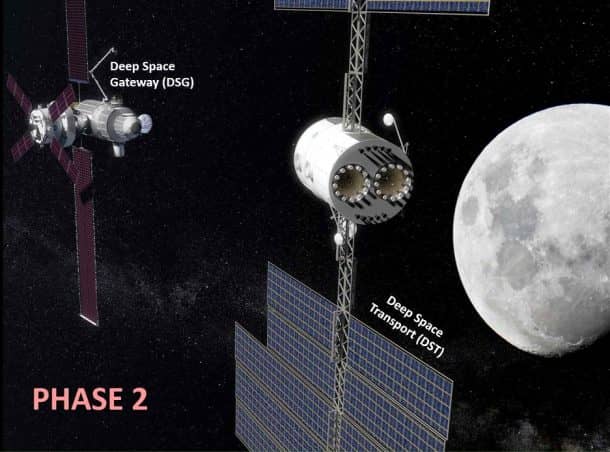A lot of space conspiracy theorists say that Apollo moon landing was staged. Well, whatever lets them sleep better at night but NASA is planning to send humans to Mars by 2030, and the mission may involve a group of astronauts orbiting the moon for an entire year in the late 2020s.
The plan was revealed at the Humans to Mars Summit on 9th of May in Washington DC where NASA’s deputy associate administrator for policy and plans in the Human Exploration and Operations Mission Directorate, Greg Williams gave a detailed outline of the first two phases of the plan for sending humans to Mars. A space-based habitat will be placed in the lunar orbit, the hardware for which will be delivered and assembled on a minimum of five lunar trips, four of which will be manned. The craft named Deep Space Transport will serve as the testing ground for all the next Mars missions technology and operations. The same would be used as a launching point for the spacecraft carrying humans to Mars. This development is planned to be achieved by the year 2027.
The director of global sales and marketing for Boeing’s space exploration division, Pete McGarth confirmed the plans saying, “The ability to simultaneously launch humans and cargo on SLS [NASA’s Space Launch System] would allow us to assemble the Gateway in four launches in the early 2020s.”
The next step is a 1,000-day mission to the red planet that is meant to take place in the 2030s. Greg Williams spoke of the plan at the Summit, “If we could conduct a yearlong crewed mission on this Deep Space Transport in cislunar space, we believe we will know enough that we could then send this thing, crewed, on a 1,000-day mission to the Mars system and back.”
Another spacecraft Deep Space Gateway will also be placed in the lunar orbit that will collect supplies and fuel, serving as the docking station for the Deep Space Transport before it takes on the Mars journey.
Even though the plans revealed by the space agency are very detailed, Williams says that the plan is still “evolving” as NASA continues to establish collaborations with other nations and industry partners. “We’re trying to lead this journey to Mars with a broad range of partnerships. One of the things we’ll be doing over the next few years is, putting that package together: what players want to provide what — both nationally and internationally — and how we can together, with NASA in an orchestrating role, really move out on these crewed missions to Mars.”





